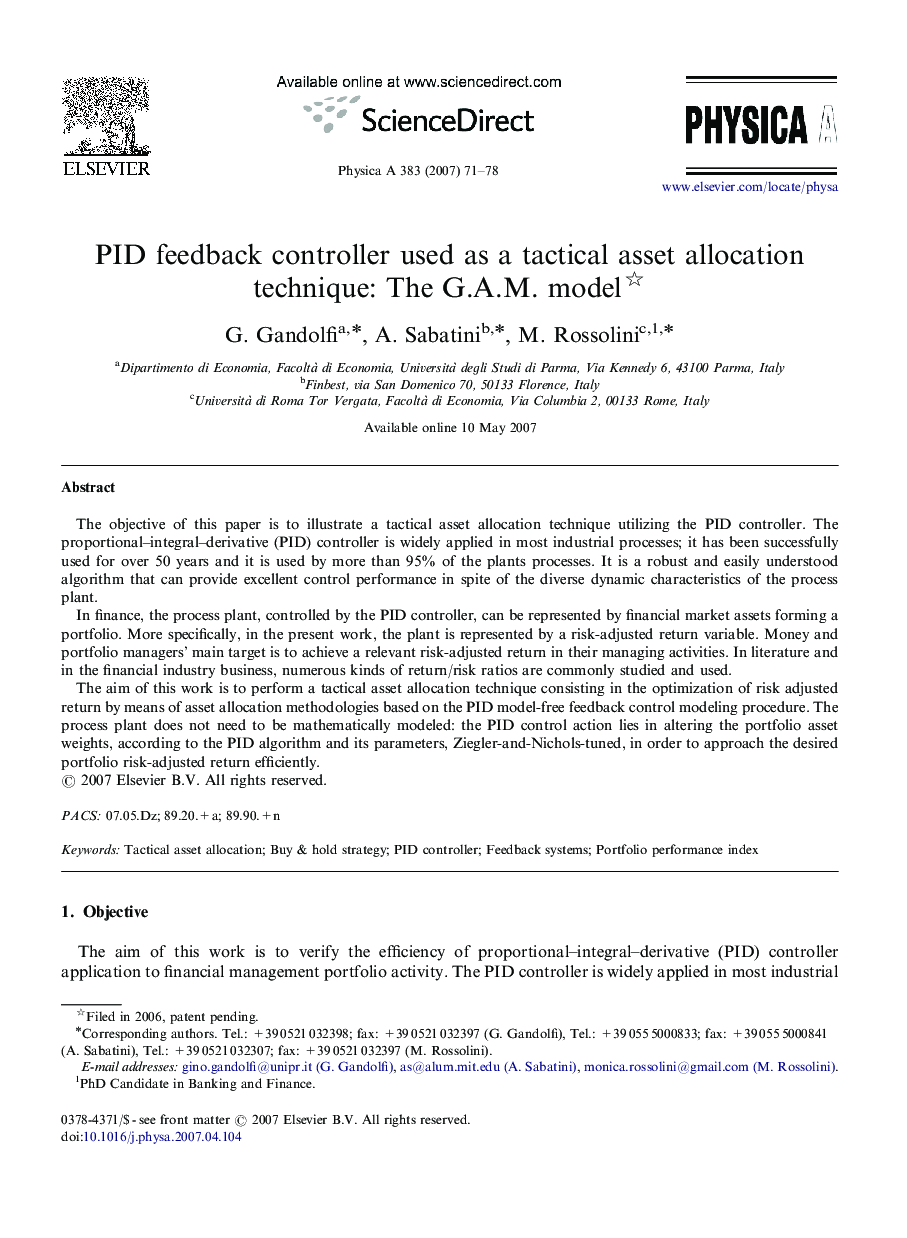| Article ID | Journal | Published Year | Pages | File Type |
|---|---|---|---|---|
| 979549 | Physica A: Statistical Mechanics and its Applications | 2007 | 8 Pages |
The objective of this paper is to illustrate a tactical asset allocation technique utilizing the PID controller. The proportional–integral–derivative (PID) controller is widely applied in most industrial processes; it has been successfully used for over 50 years and it is used by more than 95% of the plants processes. It is a robust and easily understood algorithm that can provide excellent control performance in spite of the diverse dynamic characteristics of the process plant.In finance, the process plant, controlled by the PID controller, can be represented by financial market assets forming a portfolio. More specifically, in the present work, the plant is represented by a risk-adjusted return variable. Money and portfolio managers’ main target is to achieve a relevant risk-adjusted return in their managing activities. In literature and in the financial industry business, numerous kinds of return/risk ratios are commonly studied and used.The aim of this work is to perform a tactical asset allocation technique consisting in the optimization of risk adjusted return by means of asset allocation methodologies based on the PID model-free feedback control modeling procedure. The process plant does not need to be mathematically modeled: the PID control action lies in altering the portfolio asset weights, according to the PID algorithm and its parameters, Ziegler-and-Nichols-tuned, in order to approach the desired portfolio risk-adjusted return efficiently.
